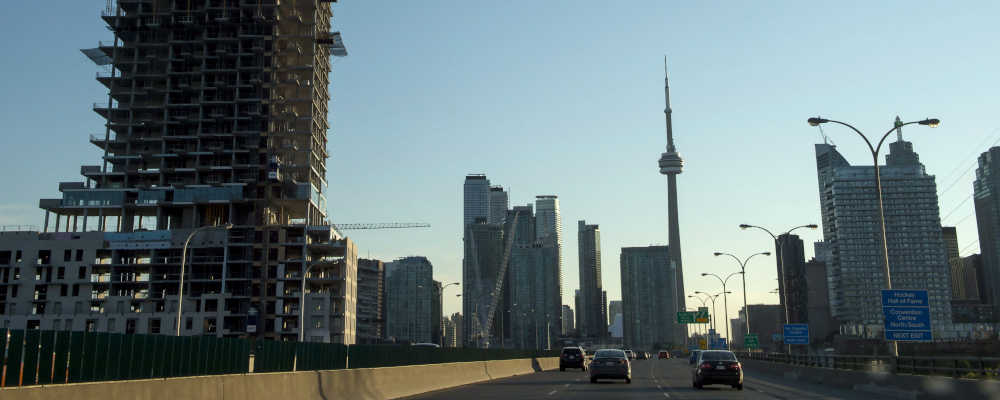There’s a solution to the housing crisis and it’s not going to cost you anything. Nor is it going to have any additional adverse impact to the character of your neighbourhood.
It’s called inclusionary zoning and Toronto’s city council has really committed to those first two sentences.
I’m afraid I’m here to pour some cold water on this idea.
Let’s start with a bit of background.
Inclusionary zoning refers to a legal requirement that a given percentage of a new development project be priced below the market rate according to a predetermined formula, either as a fraction of average market rents or in relation to local incomes, and for a set amount of time.
Ontario’s Liberal government introduced legislation allowing municipal governments to set inclusionary zoning requirements in early 2018.
In 2019, the Progressive Conservative government amended that legislation to limit inclusionary zoning to so-called Protected Major Transit Station Areas (PMTSAs), or within 800-meters of a new or existing major transit station.
These PMTSAs were designed to encourage transit-oriented development by establishing density targets that municipal governments need to work toward in their land use planning.
Now, Toronto’s planning department, with direction from city council, is drafting policies that would establish the city’s inclusionary zoning requirements. These will be tabled and voted upon when council reconvenes in the fall.
Let’s now take a broader view of the issue.
Housing in our big cities is expensive because there’s not enough of it. The way out is through development and increased supply. We need more homes for more people.
Inclusionary zoning is in effect the provision of new subsidized homes paid for by a tax on real estate development, the very activity that we want to encourage and scale.
First order effect: a greater percentage of the homes being completed every year will be priced below the market rate.
Second order effect: there will be fewer homes completed every year.
But that’s not how Toronto’s city council is thinking about it. Much of the rhetoric coming from the most outspoken councillors doesn’t get past the first order effect.
As the thinking goes, we’re seeing approximately 20,000 units completed every year in the city. If we could require that an aggressive 20 to 30 percent of these units be priced well-below the market rate, we could see our stock of capital-A Affordable housing increase by 4-6,000 units every year. Not bad!
To the extent that some thinking has been applied to the second order effect, it goes something like this.
Landowners within PMTSAs have benefited from the land value appreciation that comes from close proximity to major transit stations. If the incidence (or burden) of the inclusionary zoning requirement falls mostly on landowners, and it does, then inclusionary zoning could be thought of as a partial clawback of that unearned value.
In the long run, land prices will reset at a lower point as they “absorb” the policy change and development activity will proceed uninterrupted. Maybe.
And what about the short run? Worsening housing affordability has become a particularly acute problem, after all. Here comes the cold water.
Housing in our big cities is expensive because there’s not enough of it.
The economic feasibility of a development project is evaluated by the amount of money it returns over the amount of money it costs. Simple enough. For a rental project, this is expressed as a capitalization (or cap) rate.
If it costs $100M to develop a rental building that returns $3.5M in rental income net of all operating expenses in its first year, that’s a cap rate of $3.5M over $100M, or 3.5 percent.
Below a certain cap rate threshold, the project is not worth pursuing.
An inclusionary zoning requirement impacts the cap rate directly by decreasing the amount of money the project returns. Pricing some units below the market rate leads to a decrease in the net operating income.
To maintain an acceptable cap rate, developers will have to find proportionate offsets in project costs.
Project costs include land costs, soft costs (design fees and taxes, for example), and hard costs (construction costs). The latter two categories are what they are. The city has indicated that it’s not willing to pair inclusionary zoning with any tax incentives. The proportionate offset will have to come from land costs.
An inclusionary zoning requirement reduces the amount of money developers are able to pay landowners for their land.
And here’s where the gap between the long run and short run appears.
In the short run, many landowners will not be willing to accept any material reduction in the value of their land. They’ll hold onto it until the market catches back up to their expectations rather than sell it for a depressed price.
As inclusionary zoning becomes law, we should expect to see less land being sold to developers, less development activity, and less new housing being completed every year.
In fact, this concern was articulated very clearly in a report the City commissioned from urban planning and market research firm N. Barry Lyons Consultants Limited (NBLC). From the report, under the “Impacts on Affordability” heading:
“As discussed in prior sections and our previous reporting, an impact of an IZ policy would be to cap a portion of project revenue, (increasing costs as a proportion of total revenue) placing downward pressure on residential land value. If land prices decline significantly, landowners may be less likely to sell property for the purposes of redevelopment. This could result in reducing the supply of housing entering the marketplace until demand increases pricing sufficiently to trigger development. In broad terms, constraints on housing supply can affect affordability. The key to a successful IZ policy will be to strike a degree of balance so that the supply of new market housing does not contract. “
Inclusionary zoning might not be the free lunch we’ve been promised.
So, what’s the alternative?
First, we should update our land use rules to allow for much more development overall. This would place downward pressure on market prices and make housing more affordable to more people. I’ve written a bit about that in my last few pieces.
Second, if we do want to provide below market rate units for our lowest income residents — if we think that this is a broad social responsibility — then we should pay for it broadly through our property taxes. As mentioned earlier, this could take the indirect form of tax incentives for development projects subject to inclusionary zoning.
I think that this money would be better spent on more older, less expensive units than fewer newer, more expensive units, but in either case, it should be done in a way that doesn’t introduce a disincentive to new development.
Recommended for You

The Notebook by Theo Argitis: Trump halts trade talks, Carney’s trade-offs and John McCallum’s legacy

The Weekly Wrap: The Liberals must abandon their internet regulation agenda

‘A direct attack’: The Roundtable on Trump’s surprise trade announcement and Canada’s immigration debacle

Heather Exner-Pirot: No, we’re not done building pipelines in Canada




